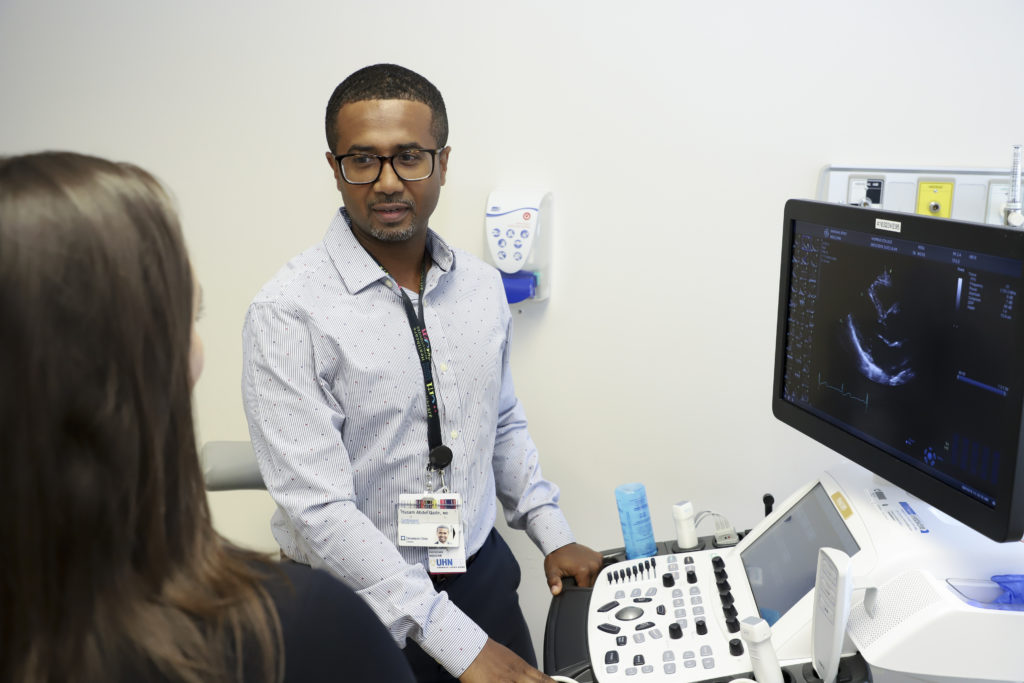To what extent does universal healthcare off-set the inequities patients experience as a result of income disparity? And by removing the barriers associated with cost, can we ensure that all patients receive equitable access to care? These questions are explored in a recent study by Dr. Husam Abdel-Qadir, a Women’s College Hospital (WCH) cardiologist and scientist.

In the study Dr. Abdel-Qadir and colleagues examined care processes and outcomes for patients newly diagnosed with atrial fibrillation (AF), the most common heart arrythmia affecting roughly 200,000 Canadians. All study participants lived in Ontario and were over 65 years of age. As a result, all prescription medication was subsidized, and all patients received care through the province’s single payer healthcare system.
“We found that regardless of a patient’s neighborhood, being treated in our universal healthcare system was able to eliminate some barriers to care,” Abdel-Qadir said. “There was minimal difference between patients after diagnosis with respect to their ability to access primary care, anticoagulation and echocardiography. This is critical as anticoagulation medication (i.e., blood thinners) and tests like echocardiograms are the most important aspects of treatment for AF.”
The study also found that patients living in lower income neighbourhoods had higher rates of stroke, death, heart failure and bleeding after their AF diagnosis. Additionally, patients living in low-income areas were less likely to visit a cardiologist or receive rhythm control interventions, despite these additional associated risks.
“There are a few factors at play that can help us understand this disparity,” Dr. Abdel-Qadir shared. “The clinical guidelines clearly emphasize the importance of treatments like blood thinners and echocardiograms. So, our results suggest that this form of consistent and strong communication to clinicians has been effective. Clinical guidelines however do not emphasize care options like specialists or rhythm control interventions like ablation to the same extent, which are seen more as quality-of-life interventions, rather than life extending ones. Treatments like ablation and referrals to cardiologists also require more follow up and time, something that is likely more difficult for lower-income patients who may not be able to take time off work for example. We also noticed that the less readily available a treatment is, the more disparity we saw between residents of the wealthiest and most deprived neighborhoods.”
These findings highlight the reality that cost as a barrier to care often has knock on affects that impact other aspects of a patient’s ability to access care equitably. Time, flexible work hours, childcare access and transportation all influence a patient’s ability to seek treatment. As a result, lower income patients may be missing out on forms of care that can help improve their quality of life with AF.
“We have a publicly funded healthcare system that isn’t equitably accessed,” Abdel-Qadir stated. “Healthcare is not universal if it is not accessible to everyone. In order to address this issue, we need to target other barriers to care and make treatment more available in the communities most impacted. One option is specific AF clinics which can be run by non-cardiologists, nurse practitioners and pharmacist, like the one here at WCH. This interdisciplinary approach leverages healthcare resources more efficiently and ensures patients receive targeted care closer to home. It also allows us to select the patients who may need more specialized cardiology care and help them navigate the system.”
True health equity requires a comprehensive approach that recognizes both the impact of income disparity, as well as other social determinants of health. Leveraging innovative care models and approaches tailored to the patients most affected is one step forward.